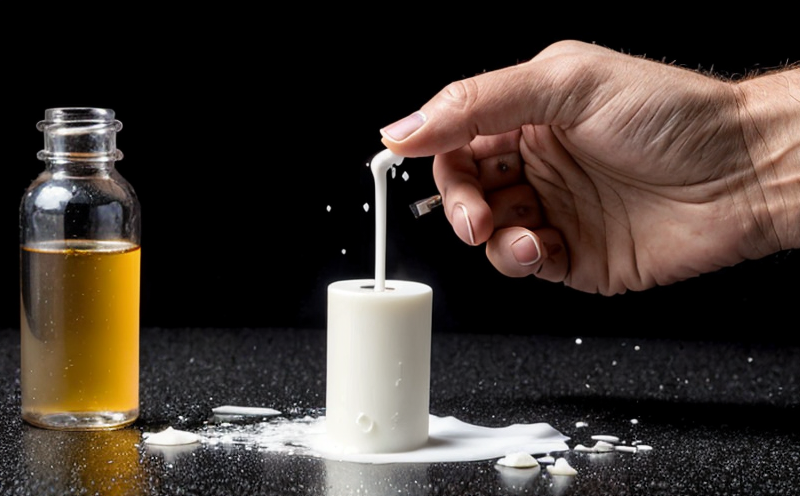USP Disintegration of Modified Release Tablets Testing
The USP Dissolution and Disintegration Testing is a crucial aspect in pharmaceutical quality assurance. This section focuses on the disintegration testing specifically for modified release tablets, ensuring that these formulations meet their prescribed dissolution profiles.
Modified release (MR) tablets are designed to release active ingredients over an extended period, typically to provide sustained drug efficacy. The USP Dissolution and Disintegration Testing standards ensure that such products perform as intended, maintaining therapeutic levels of the medication over time without causing side effects from premature or excessive drug release.
Disintegration testing is one of several methods used in this context. It aims to verify whether the tablet can break down into smaller particles within a specified timeframe under conditions that mimic those encountered during oral administration. This process helps ensure patient safety by preventing immediate release scenarios which could lead to adverse effects or reduced efficacy.
The USP 708 test method is specifically designed for modified-release dosage forms, including enteric-coated tablets and pellets. According to this standard, the sample must be placed in a basket with defined geometric dimensions filled with water at 37°C ± 1°C, then agitated continuously over a period of time until all particles pass through a specified sieve.
Real-world application involves careful preparation of samples according to USP guidelines. Before testing begins, the operator must ensure that all equipment is properly calibrated and functioning correctly. Samples should be stored under appropriate conditions before use to maintain their integrity. Once prepared, they are placed into the apparatus set up as per the procedure outlined in USP 708.
For accurate results, it's important to note several factors that can influence the outcome: temperature control during agitation (±1°C), proper calibration of the timer and sieve, and consistent sample preparation. Any deviation from these parameters could lead to unreliable data.
The test concludes when all particles have passed through the designated sieve size or after reaching a predetermined time limit, whichever comes first. Results are recorded along with relevant observations such as any unusual behavior during testing or changes in appearance post-disintegration.
- Temperature control
- Calibration of equipment
- Consistent sample preparation
- Proper handling and storage conditions
Applied Standards
The United States Pharmacopeia (USP) provides authoritative standards, monographs, and guidelines for medicines and related health-care products. USP 708 specifically addresses the disintegration of modified-release dosage forms.
This standard ensures that pharmaceutical products comply with rigorous quality assurance protocols. Compliance is essential not only within the United States but internationally as well. Adherence to these standards helps protect public health by ensuring consistency and reliability across different markets.
Other relevant standards include ISO 10626, which sets out requirements for determining the disintegration time of granules or pellets intended for oral administration; ICH Q5C, which provides guidelines on biocompatibility studies involving medical devices; and EN 358, which deals with safety aspects of medical electrical equipment used in patients' homes.
By following these internationally recognized standards, laboratories can ensure their testing methods are up-to-date and aligned with global best practices. This is particularly important when conducting cross-border or multinational studies where uniformity across jurisdictions is key to accurate interpretation and consistency of results.
Industry Applications
In the pharmaceutical industry, compliance with USP standards like those for disintegration testing is critical. These tests help ensure that modified-release tablets deliver their active ingredients at specified times throughout treatment cycles.
This ensures effective therapy while minimizing side effects associated with incorrect dosing schedules. For example, if a patient takes too much medication early in the day due to poor formulation design, it could lead to adverse reactions or decreased effectiveness later when more is needed.
Compliance also plays a role in maintaining brand reputation and regulatory approval status. Non-compliance can result in product recalls, lawsuits, and lost market share. Therefore, many companies invest heavily in quality control measures including rigorous testing according to USP standards.
Moreover, pharmaceutical firms often collaborate with third-party labs specializing in such tests to enhance credibility and precision. These partnerships allow for more accurate assessments which ultimately benefit both the company and consumers by providing safer, more effective medications.
Quality and Reliability Assurance
- Consistent temperature control during testing
- Precise calibration of all laboratory instruments
- Standardized sample preparation procedures
- Regular maintenance schedules for equipment
- Trained personnel operating the apparatus
- Documented protocols for every test run





